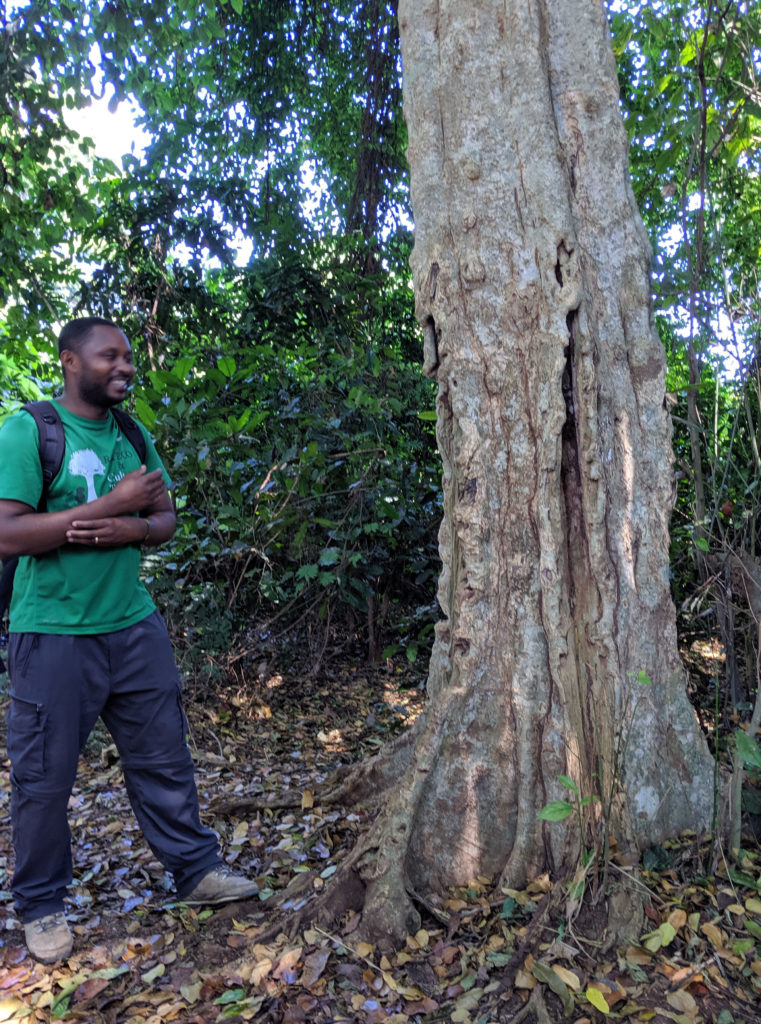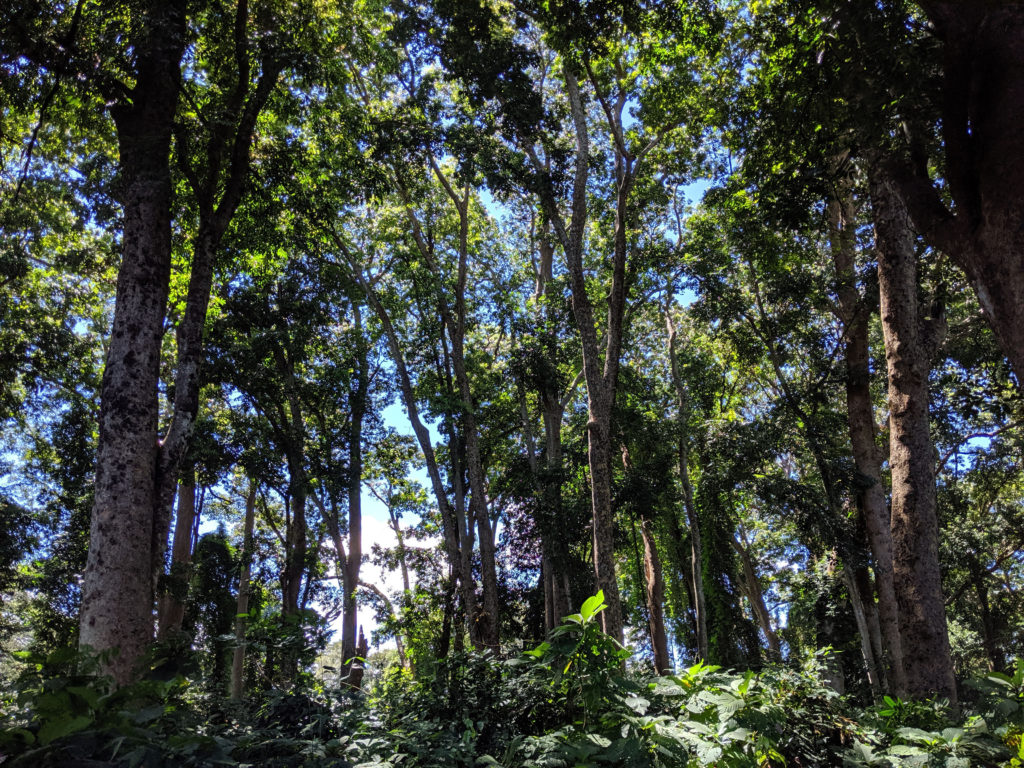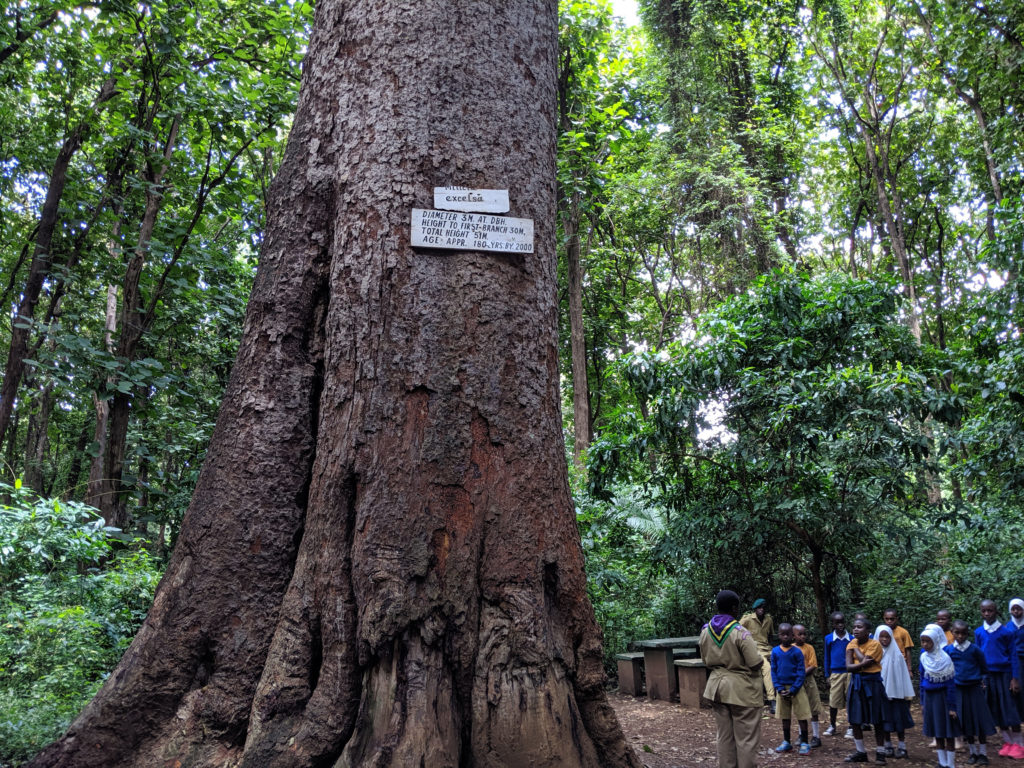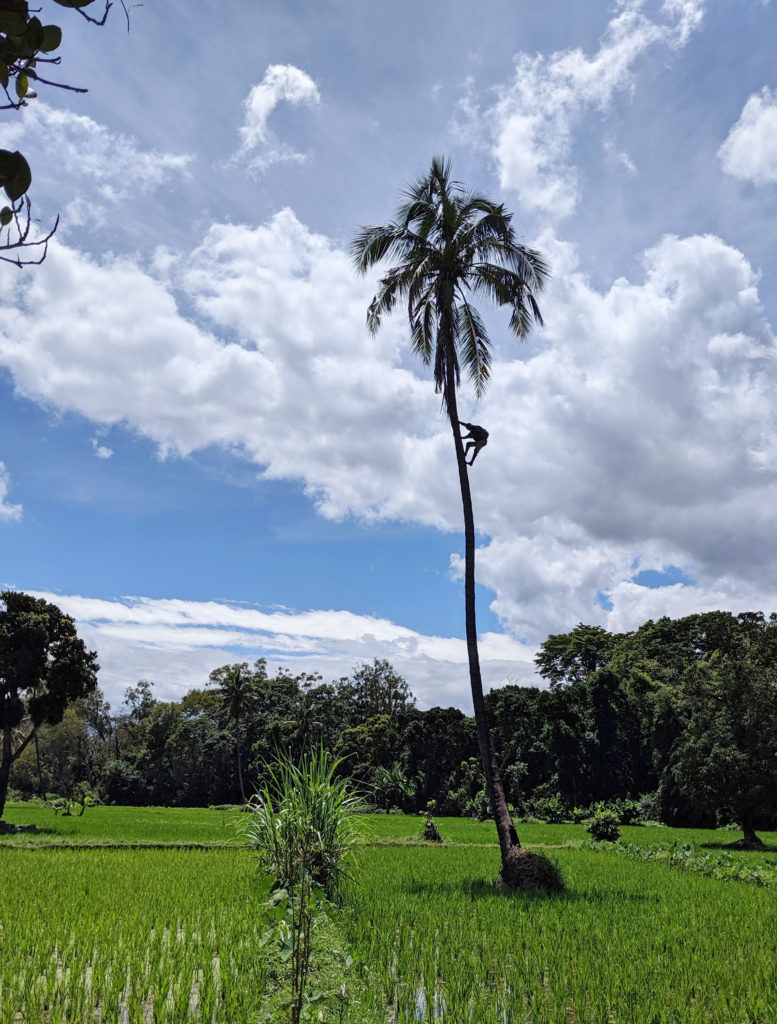
I went to Moshi to visit my Fulbright friends on Saturday. We all met in Chicago at a pre-departure orientation. Moshi is on the slopes of Mt. Kilimanjaro. While there, we got to hang out with another Fulbright family who have just finished their Fulbright stay. Sometimes it is nice to be around other Americans just because you have a lot of assumed knowledge.
It cost about $2 to get there by bus – $1 to get to the road and another $1 to get all the way to Moshi. I didn’t have a seat at first since they leave from Arusha full. I got on in Tengeru. There were a lot of stops to drop people off and pick people up. I had a book on kindle on my phone so that was okay. My legs didn’t fall asleep like they would riding the matatus in Kenya.
On Sunday we did a tour of Rau Forest Reserve on the outskirts of Moshi with Rau Eco and Cultural Tours. Linus was our guide for the trip through the forest. He was really knowledgeable and passionate about conserving the forest. He told us the story of his company while we were having some snacks – three young guys graduated from Tengeru Community Development College close to Nelson Mandela. They decided to start this business Rau Eco and Cultural Tourism Enterprise. It took a few years to just get 6 reviews on TripAdvisor. An Austrian business professor visited and spent 3 weeks with them helping to figure out a master plan for their business. She had them do some seemingly weird exercises – like walk into the forest and find a good place to meditate. They were supposed to spend 30 minutes at it and ended up spending a couple of hours!


Upon entering the Forest, it was cooler and a lovely spot to be in on a warm Tanzanian day. We saw Colobus Monkeys right away and Linus told us about their diet, behavior and conservation. He also pointed out a number of indigenous tree species, giving their common names in English and Swahili and their scientific names. He told us how each tree is used in traditional medicine. Some trees had termite tracks on the outside but were otherwise resistant and so were good for building, while others had been eaten by termites.
One of the best parts of the hike was going into the middle of the forest on a “silent walk” so that we could really hear the monkeys roaring about their territories, the birds, and even the bees buzzing around. We then had a little snack (chips made from bananas) and did another activity of meditating while experiencing the heart of the forest.

We went to what is probably the largest Mvule tree (African Teak) in existence. There were some young Tanzanian Scouts and their Scout Leader there as well.

Next we went out into the nearby rice fields and saw other birds and how Tanzanians plant other crops on the border of the rice fields. It was so green! Mr. Benjamin, a local farmer, climbed a palm tree and brought us each a fresh coconut. He hacked it open with a machete so we could drink the milk. He also cut some sugar cane so we could have some more sweetness.

One thing that I appreciated is that Linus was able to answer all kinds of questions, and was really good at judging just how much information we wanted (I wanted a lot!) Rau Ecotours have also spent countless hours picking up plastic bottles from the forest. Linus talked about local people being skeptical that they could clean it up, but their educational outreach has seemed to have a big impact.
Then it was back to the headquarters where we had lunch provided by a retired doctor and his wife. It was a nice Tanzanian end to our delightful day.

I would have liked to watch Mr. Benjamin climb that palm tree. Would you attempt that feat?